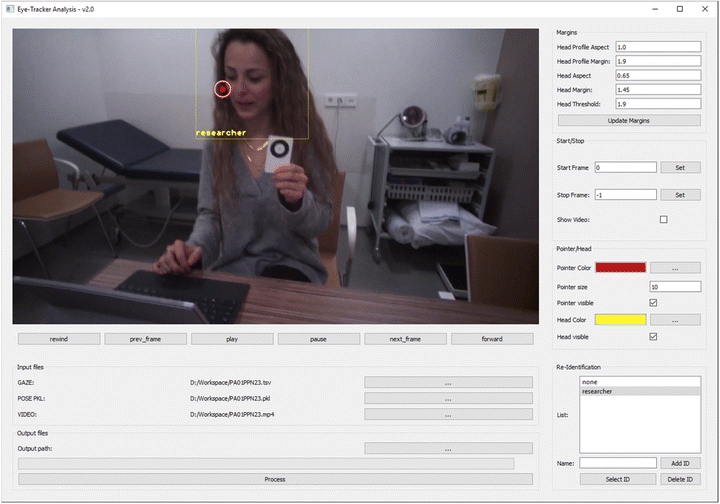Eye-tracking glasses in face-to-face interactions: Manual versus automated assessment of areas-of-interest

Abstract
The assessment of gaze behaviour is essential for understanding the psychology of communication. Mobile eye-tracking glasses are useful to measure gaze behaviour during dynamic interactions. Eye-tracking data can be analysed by using manually annotated areas-of-interest. Computer vision algorithms may alternatively be used to reduce the amount of manual effort, but also the subjectivity and complexity of these analyses. Using additional re-identification (Re-ID) algorithms, different participants in the interaction can be distinguished. The aim of this study was to compare the results of manual annotation of mobile eye-tracking data with the results of a computer vision algorithm. We selected the first minute of seven randomly selected eye-tracking videos of consultations between physicians and patients in a Dutch Internal Medicine out-patient clinic. Three human annotators and a computer vision algorithm annotated mobile eye-tracking data, after which interrater reliability was assessed between the areas-of-interest annotated by the annotators and the computer vision algorithm. Additionally, we explored interrater reliability when using lengthy videos and different area-of-interest shapes. In total, we analysed more than 65 min of eye-tracking videos manually and with the algorithm. Overall, the absolute normalized difference between the manual and the algorithm annotations of face-gaze was less than 2%. Our results show high interrater agreements between human annotators and the algorithm with Cohen’s kappa ranging from 0.85 to 0.98. We conclude that computer vision algorithms produce comparable results to those of human annotators. Analyses by the algorithm are not subject to annotator fatigue or subjectivity and can therefore advance eye-tracking analyses.